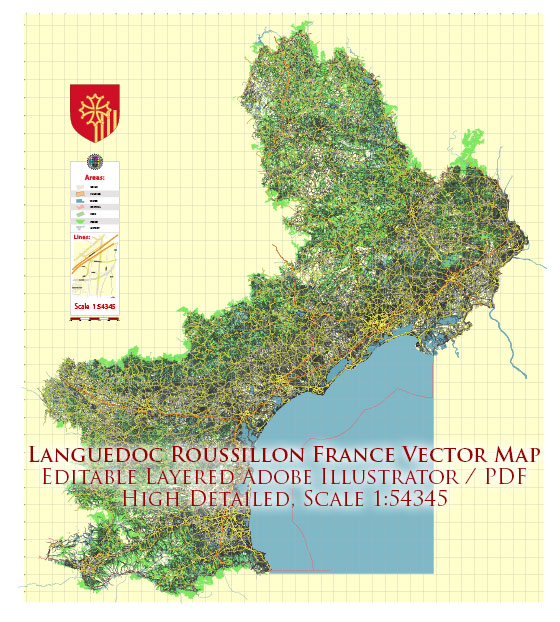The region of Languedoc-Roussillon, located in the southern part of France, has a rich history of urban development that spans thousands of years. The area has been shaped by various civilizations, each leaving its mark on the landscape and contributing to the region’s cultural heritage. Here is a brief overview of the history of urban development in Languedoc-Roussillon:
- Roman Influence (circa 118 BC – 5th century AD):
- The Romans were instrumental in shaping the urban landscape of Languedoc-Roussillon. Nîmes, for example, boasts some of the best-preserved Roman structures in the region, including the famous Pont du Gard, an ancient aqueduct, and the Arena of Nîmes, a Roman amphitheater.
- Medieval Period (5th century – 15th century):
- During the medieval period, the region saw the construction of numerous castles, fortifications, and walled cities. Carcassonne, a UNESCO World Heritage site, is a prime example of a medieval fortified town, with its well-preserved city walls and towers.
- Cathar Castles and Albigensian Crusade (12th – 13th centuries):
- The Cathars, a religious group considered heretical by the Catholic Church, inhabited the region during the 12th century. The conflict between the Cathars and the Catholic Church, known as the Albigensian Crusade, led to the destruction of many Cathar castles, such as Quéribus and Peyrepertuse.
- Renaissance and Baroque Period (15th – 17th centuries):
- Cities like Montpellier saw significant growth during the Renaissance and Baroque periods. Montpellier, in particular, became a center for learning and culture, with the establishment of the University of Montpellier in 1220.
- 18th and 19th Centuries:
- The 18th and 19th centuries brought about changes in urban planning and architecture. Some cities underwent expansion and renovation during this time. The influence of the Enlightenment and the Industrial Revolution played a role in shaping the urban environment.
- Modern Development (20th century – present):
- In the 20th century, Languedoc-Roussillon experienced further urbanization and modernization. The region has seen population growth, and cities have expanded to accommodate the changing needs of society. Urban planning has become more sophisticated, with a focus on sustainability and preserving historical heritage.
Throughout its history, Languedoc-Roussillon has been a melting pot of cultures, and this diversity is reflected in its urban development. The region’s cities and towns showcase a blend of Roman, medieval, Renaissance, and modern influences, making it a fascinating area for those interested in the history of urban development.


 Author: Kirill Shrayber, Ph.D.
Author: Kirill Shrayber, Ph.D.